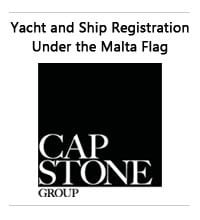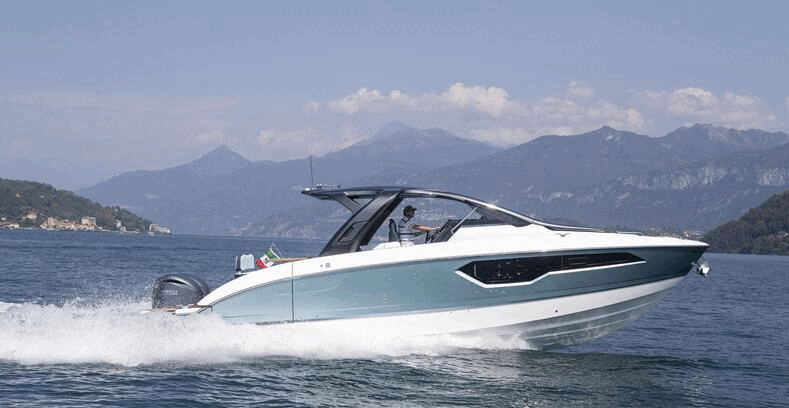 Presentation
Presentation Grand Banks launched the 41 Heritage EU in 2008 after presenting the project a year earlier in 2007. While looking on the outside as a real Grand Banks Heritage with similar distinctive trawler like lines still echoing the 1962 built Spray which was the fore runner of the 36 launched in 1964, the new 41 Heritage EU was a challenge of innovation from its builders by being the first explorer cruiser to be powered by pods. A follower of traditional in line shaft drives since the founding of the company in 1956 the change of new propulsion units to one of its boats was taken with huge surprise and enthusiasm by the brand aficionados, and the press. Out of the available pod units in the market Grand Banks choice went to the ZF Zeus aft looking dual propeller pods. The benefits of the two so far presented pods are known to everyone since 2006, but in case you missed a beat in the last years will repeat them: better efficiency, easier handling, and more speed. If you are looking at a Grand Banks I am sure your interest is greatly revolved around efficiency at a comfortable cruising speed, and it is also this improvement the main reason behind the US Asian boat builder pod transition.
Accommodation
As good as it looks the 41 Heritage EU offers real Grand Banks live aboard space in its main deck, a large flybridge, and a twin cabin lower deck. The open aft deck space typical of the EU for Europe models, ideally suited for stern too mooring, welcomes you on board the 41. Here a central patio door takes you inside the flushed decked interior saloon welcoming you with an L-shaped settee to port, a three person bench sofa opposite, large size comfortable galley, and lower main helm station to port. The bench sofa can be changed with two movable chairs as in the optional layout for the main deck.
A central stair case leads from the living to the below accommodation deck featuring two spacious cabins, and a large head. The owners cabin with double queen sized berth is located to fore. Guest second cabin with two single berths, which can transform to a double becoming a VIP is located to starboard mid ship. The shower head room which is quite large takes as much space as that of a small cabin, and features a very spacious shower room separated by a sliding door from the head and sink. Below is also space for a big storage room located to mid ship before the cabins, with a hatch entrance located on the main deck saloon. The storage room of the 41 Heritage EU has the space if you want of a cabin and here is also the two fuel tanks located to both sides, and the water tank which stands by the aft looking bulk head.
For going from the inside to the outside of the 41 Heritage EU are two ways. Unusual for a fourteen metre but not for a Grand Banks which has a side door by the helm station taking you to the walk around deep wide ship like deck to starboard, and the traditional aft patio door to the cockpit. From the aft deck and up the integrated staircase is the way point to the open air living area that is the flybridge which features a free space suited for tender stowage, a wet bar, L-shaped settee, bench sofa to port, and a single seat central second helm station.
 Performance
Performance Many think of Grand Banks as slow boats, but the real fact of the matter is that the traditional trawler looking explorer cruisers and yachts have always had a hybrid designed semi displacement planning hull with keel capable of twenty plus knots, which for the 41 Heritage EU also has a medium vee seventeen degrees dead rise aft, and deep twenty two at midships. This hull while reminiscent of trawler yachts puts in use the advantages of faster hulls, giving a stuck to the water feel safe approach typical of a displacement hull but at the same time when necessary also sporting an agile handling similar to a planning design. The 41 Heritage EU further improves and consolidates the planning notion by offering a fast propulsion set up with the ZF Zeus aft looking dual propeller pods, and twin medium power Cummins 425hp each. Top speed is of 25 knots, not bad for an explorer cruiser with an all time cruise of 17 knots. Range always an important theme in an explorer cruiser is a shy for an explorer boat 276 nm at 17 knots, but a reassuring 743 nm at the most economic seven knots speed.
Positive
Zeus pods performance handling
main deck
utility room space
Negative
no second head
Competition
Grand Bank's 41 Heritage EU is a bit of a unique boat offering speeds close to those of a flybridge motor cruiser type boat, and at the same time having a slow medium cruising range similar to that of heavier full displacement explorer type yachts. That's not to say the 41 is not an explorer medium range cruiser, it is also this, but it also offers benefits of the other way of going on the water while still being in its own unique explorer world. Closest competitors to the Grand Banks concept are all shaft powered and are the down under build Clipper 45 Cordova, Mainship 45 Trawler, and the bit bigger Italian Estensi 480 Maine. Criteria was for Explorer Cruisers with twin medium range or single engine longer transatlantic set up, thirteen to fourteen metres of length, and an open Europe style aft main deck.
Adagio 48 Europa - three cabin two head option, double dinette
American Tug 41 - twin large cabin with heads, main deck with split floor
Clipper 45 Cordova - similar interior plan, but more modern looks
Estensi 480 Maine - Italian build, 3 cabins, similar speed
Kadey-Krogen 44 - displacement long range, single engine, separate pilot house
Ruby 43 Sedan Trawler - slower single engine, similar interior to GB
Mainship 45 Trawler - 2 heads, similar speeds, lower deck galley
Mirage N47 Great Harbour - twin small engines, living galley below
Nordhavn 47 - 2 en-suited cabins, single engine slow displacement, long range
Jet Tern Selene 44 - displacement single engine long range, separate helm, two heads
WILD CARD: Menorquin MY145 Flybridge - traditional looks, similar range
Conclusion
With its traditional line and looks, the Grand Banks 41 Heritage EU pays big tribute to its name, hiding it's revolution in the engine room, propulsion and hull all this representing the brand in the past, present, and future. The 41 was launched in 2008 as the new entry level to the explorer cruiser Heritage line, breaking new technical ground, thanks to the innovation presented by the pod drives. This also stepped up the 41 Heritage to make a revolution to the range, which only the future will tell if this is big as the 36 which marked the change to fiberglass construction at Grand Banks in 1973. This new propulsion set up give the 41 Heritage EU also a big efficiency advantage: that of good medium speeds with less powerful engines, and a better range when going slow. Thinking that pods started there life for use on ships in 1998 it is also surprising how this system is as today ignored on semi planning, displacement medium sized yachts! Apart from the pod drives, the 41 Heritage EU follows the famed Grand Banks selling points, that of superb attention to detail with a living aboard comfort in a luxury wooden finished interior. A successful theme proposed by the US Singapore builder since its inception in 1956, which I doubt will it ever consider to change.
Technical Data
LOA. 14.05 metres (46.2ft) max includes pulpit and platform
Hull Length. 12.59 metres
Waterline Length. 11.56 metres
Beam. 4.77 metres
Draft. 1.12 metres
Displacement. 18,235 kg
Fuel Capacity. 1893 litres
Water Capacity. 738 litres
Accommodation. 4 berths in 2 cabins
Engines. 2 x Cummins QSB5.9 425hp
Propulsion. ZF Zeus aft looking dual propeller pods
Speed. 25 knots max, 17 knots cruise
Range. 276 nm at 17 knots cruise, 743 nm at 7 knots
Hull Shape. semi displacement planning hull with keel 17 degrees aft, 22.7 mid ship
Project. Grand Banks
Design Team, Earl Alfaro hull, Toni Profitt interior.
Construction. solid bottom hull, vacuum bagged foam core sides and deck, clear gel coat with epoxy resin below waterline
Certification. CE B
Design Team, Earl Alfaro hull, Toni Profitt interior.
Construction. solid bottom hull, vacuum bagged foam core sides and deck, clear gel coat with epoxy resin below waterline
Certification. CE B




















It is supprising to me that this vessel would be considered "semi-displacement" with a speed of 25kts. What is the criteria used to make that determination?
ReplyDeleteIn heavy conditions offshore it is foolhardy to believe that this vessel can be cruised at 7kts. It will require a considerable amount of throttle control to keep the vessel on course in big seas as the IPS is simply not responsive enough at those speeds without throttle input. Planning hulls with their attendant scaled rudders or IPS even with its directed thrust is a formula for trouble when doing long offshore passages.
ReplyDeleteGrand Banks hulls are a hybrid design since the eighties, it is a planning shape the 17 degrees deadrise alone says that, but has displacement characteristics like the keel.... I helmed a Grand Banks 42 Classic in rather rough seas Force 6 for a 200 miles course fitted with stabiliziers the boat at 7 knots behaved a lot better then I ever imagined, and was very positive impressed. Interesting point about the pods though.
ReplyDelete